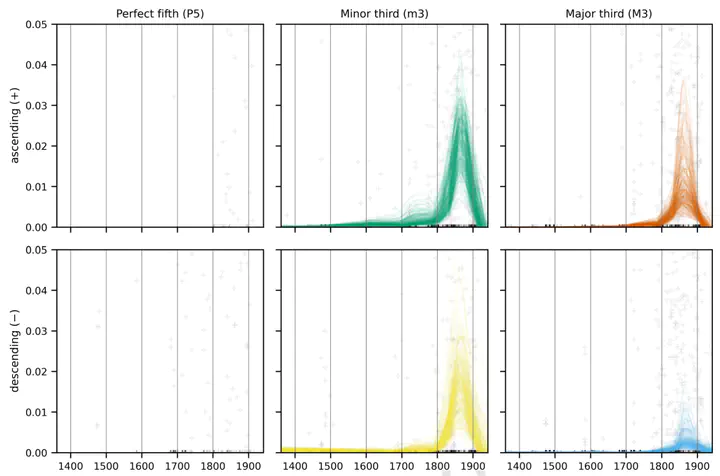Computational modeling of interval distributions in tonal space reveals paradigmatic stylistic changes in Western music history

Abstract
Diachronic stylistic changes in music are to a large extent affected by composers’ different choices, for example regarding the usage of tones, intervals, and harmonies. Analyzing the tonal content of pieces of music and observing them over time is thus informative about large-scale historical changes. In this study, we employ a computational model that formalizes music-theoretic conceptualizations of tonal space, and use it to infer the most likely interval distributions for pieces in a large corpus of music, represented as so-called ‘bags of tonal pitch classes’. Our results show that tonal interval relations become increasingly complex, that the interval of the perfect fifth dominates compositions for centuries, and that one can observe a stark increase in the usage of major and minor thirds during the 19th century, which coincides with the emergence of extended tonality. In complementing prior research on the historical evolution of tonality, our study thus demonstrates how examplebased music theory can be informed by quantitative analyses of large corpora and computational models.